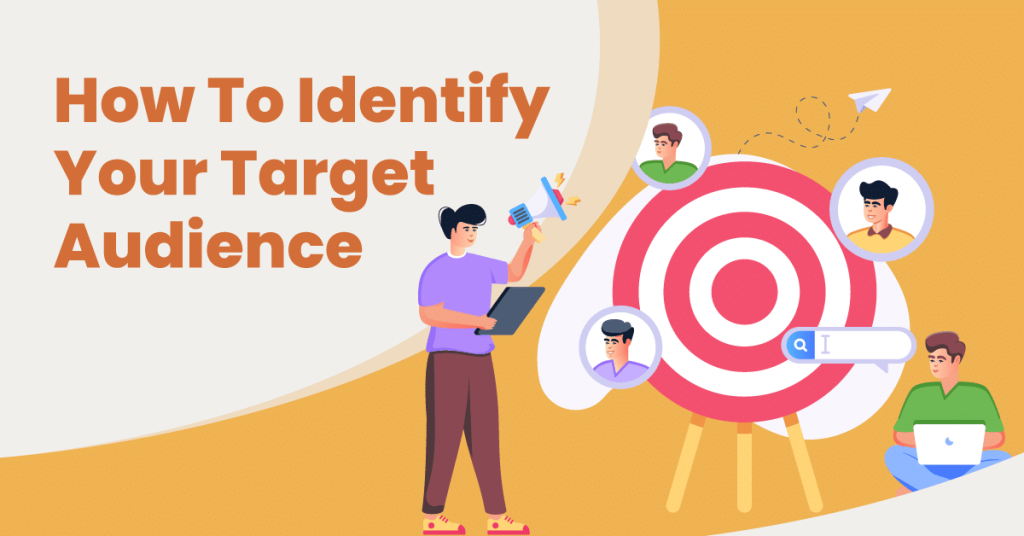
To market your business successfully, you must know your target audience. Even if you want to cast a wide net, you should understand who is most likely to need your products and services and how to reach them.
That can be easier said than done, especially if you’re a new business without a lot of historical sales data. However, there are some steps you can take to define your target audience and get started in a meaningful way. This guide will help you build a strong sense of your target audience, which you can refine over time.
How to pinpoint your brand’s target audience
When you’re defining your target audience, it’s important to gather data, analyze it and engage in some planning exercises.
“Defining a target audience is crucial for businesses because it enables them to connect with the right people in a meaningful way, allowing companies to create custom products and marketing campaigns,” said Tricia Allen, vice president of business development at Reticle AI.
Here are some proven strategies for pinpointing your target audience.
1. Build buyer personas.
When you picture your customer base, what does it look like? Who will be buying your products and services? Who are they meant to serve? You likely already have an idea of your wider customer base, but you may need help further refining your audience. To do this, you’ll want to build customer personas, also known as buyer personas.
These personas are imagined profiles of your ideal customers. Identifying their characteristics will help you determine the specific customers your brand should be targeting. To build a persona, consider the following demographics, issues and habits of your prospective customers:
- Their locations
- Their ages
- Their income level
- Their issues or problems you plan to solve
- Where they spend time online
- What kind of content they like
If you already have buyer personas but you find that they don’t match up with your sales or marketing results, you may need to revisit these personas. This is a normal part of the process, as your target audience may shift and evolve over time.
“If you’ve been targeting the wrong audience, start by gathering customer feedback, analytics, etc. data to redefine your personas,” said Ryan Jones, marketing manager at SEOTesting. “Adjust your messaging, tweak your SEO [search engine optimization] strategy, and ensure your content meets your audience’s needs.”
An example of buyer personas
As an example, let’s say your product is a new type of sock for babies. While the actual garment is for infants to wear, you’ll want to create personas for the people doing the purchasing: the parents. One persona might be a first-time mom in her 30s who lives in New York City and makes $100,000 a year. Her problem is that she can’t push her baby’s stroller down Manhattan streets without that infant taking off their socks and dropping them on the ground.
Your innovative sock, however, features a little snap that makes it harder for little ones to take off the sock at inopportune moments. This mom is always perusing online boutiques to see what stylish-yet-helpful things she can purchase for her growing kid. She appreciates content from brands that aim to make the little things easier for parents.
Another persona might be a single dad who is always rushing to get his baby dressed and ready for day care drop-off. He hates wasting time looking for where his baby threw his sock in the car’s back seat. Your sock, however, stays snug and secure on tiny feet, solving this problem. That makes this dad and others like him part of your ideal customer base.
2. Send user surveys.
If you have existing website visitors, email subscribers or clients, you can use these customer relationships to collect valuable information about their needs. People love talking about themselves and are usually more than willing to divulge their opinions about your business. You can send polls to a particular mailing list and then use the survey data to further identify the people who interact with your brand.
Asking your audience questions also helps you build a meaningful connection. It shows that you care about your customers’ preferences and experiences with your company, which can inspire customer loyalty. Too many businesses don’t bother checking in with their customers, so you can set yourself apart from the competition by sending periodic surveys and using the results to fulfill your customers’ needs.
3. Practice social listening.
To know what your ideal customers are thinking, doing and saying in real time, you need to be active on social media. This strategy, known as social listening, involves monitoring the actions of your existing and target customers on social media. Which platforms do they use the most? What discussions are they having? What hashtags do they include in posts? What brands are they interacting with?
As with survey data, such insights can help you target these consumers and even engage your audience on social media. Additionally, you should actively track your company’s own mentions, comments, replies, likes and keywords on different social media sites. You should also monitor trending topics related to your industry so you can see how interested people are responding. Use the information you gather to further zero in on your target audience and improve conversions with better-informed marketing campaigns.
4. Read Q&A forums.
When people are curious, they turn to the internet to ask questions and receive answers. Q&A forums are great to scan because you can discover who needs your services and exactly what they’re looking for. For example, you can search for relevant keywords on Quora and see what questions pop up. The people who submit those queries may be the same people you should be including in your customer base. [See the top market segmentation trends.]
5. Monitor your competitors.
By studying your competitors, you can get insight into which customers your business should be targeting and how to reach them. Ask these questions about your competitors:
- What kinds of customers are other companies in your sector targeting?
- How are your competitors reaching their target audiences?
- Is there a group your competitors are ignoring that you can serve?
- What are your competitors doing that you should be doing, too?
- What are your competitors doing that you should do differently?
You can figure out the answers to these questions via publicly accessible information. For example, browse competitors’ websites and sales materials. See what they’re posting on social media and what kinds of people are interacting with them on different platforms. The information you glean can be used to inform your own plans on which customers to target and how to engage them.
The importance of finding your target audience
An accurate portrait of your target audience helps you make the best use of your marketing dollars. It’s not enough to send content and advertisements out into the ether; you need to know who they’re designed for and direct them with purpose. That’s what defining your target audience is all about.
It improves your return on investment and reduces wasted spend.
Creating marketing content and advertisements takes time and costs money, so you want to deploy these resources strategically as you would any other asset. Understanding your target audience lets you do just that. When you tailor your messaging to resonate with your likely customers and distribute that message on the channels they’re already using, you increase the odds that your marketing efforts will drive leads and, ultimately, sales.
“Targeting the wrong audience leads to wasted ad spend and higher costs per acquisition, straining budgets with minimal returns,” Allen said. “Irrelevant ads can also harm brand reputation, making it harder to connect with the right audience later. It’s like trying to catch fish in a desert — you’re just wasting time and resources where there are no results.”
Allen used the example of targeting a younger demographic on Instagram. She said tailoring marketing content to this audience in an organic way for that channel — rather than force-feeding people content that feels like an advertisement — can have a major benefit for brands.
It builds awareness with the right people.
Even when your marketing does not immediately result in leads or sales, it puts your brand in front of an audience. When it’s the right audience, you strengthen your brand awareness and increase the odds that those people will come to you when they are ready to buy. Serving marketing content and ads to an audience that’s not interested in your products and services and never will be is a waste of time and money.
“Defining your target audience is essential because it allows you to focus on the right people and craft messaging that resonates,” Jones said.
It helps you personalize marketing content based on consumer behavior.
When you know your target audience and you collect data to consistently refine your concept of what they want, you can personalize marketing efforts in a more meaningful way.
“One way to improve the messaging is to tailor it based on what the customer is doing on your website,” said Greg Zakowicz, senior e-commerce expert at Omnisend. “For example, suppose a customer is on a website and viewing pages related to a specific product or service. Companies can automate messages to these prospective customers with relevant content based on their on-site behavior. This should help move the customer along the sales funnel and, if monitored, provide an indication of the types of content users at this stage are interested in.”
As consumers are increasingly inundated with marketing content, speaking to their exact needs at the right moment is an especially powerful strategy. These individual cases also help you understand how your target customers come to buying decisions. This knowledge, in turn, improves your ability to anticipate their needs and deliver effective marketing messages at just the right time, in just the right way.





